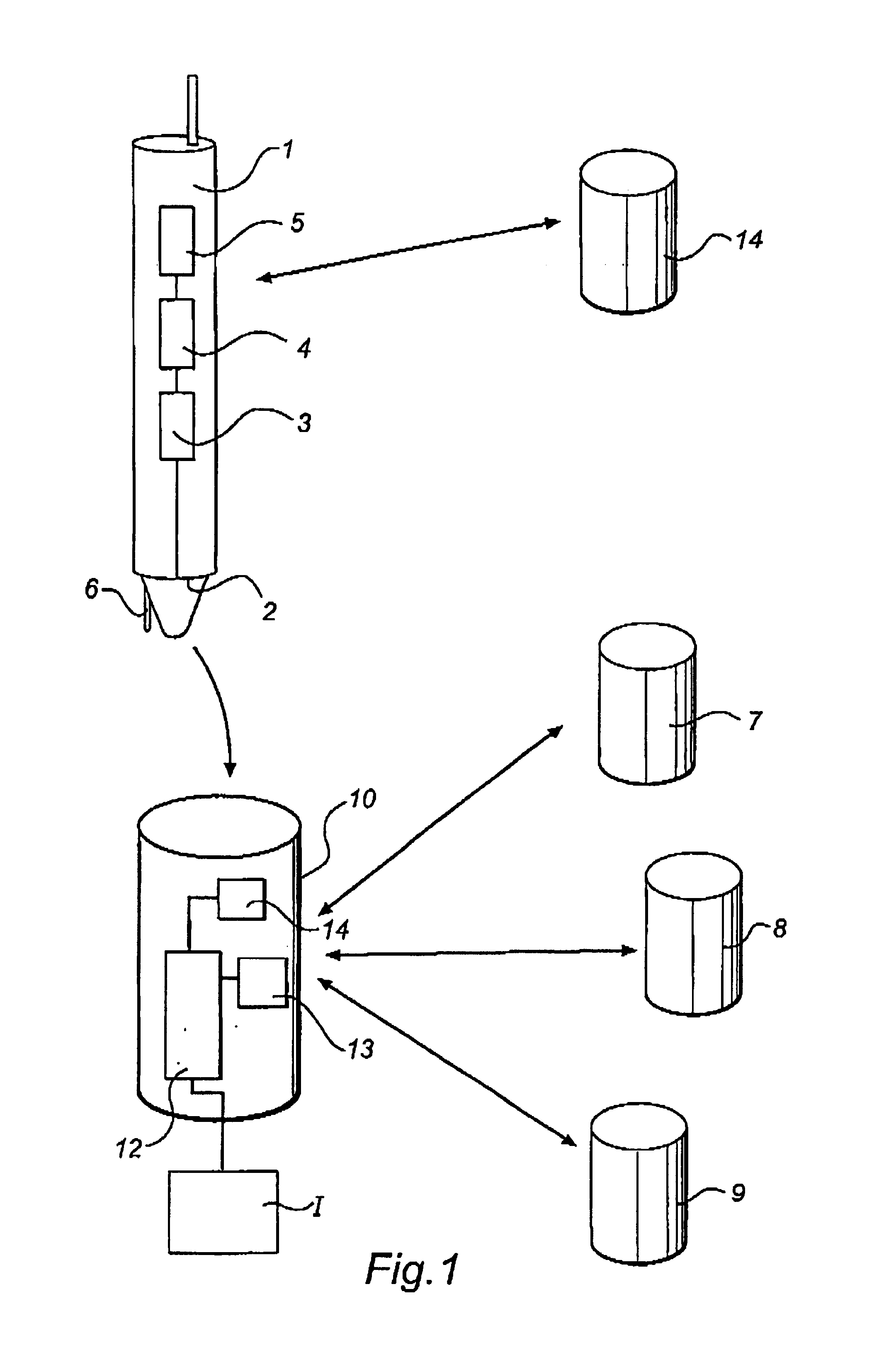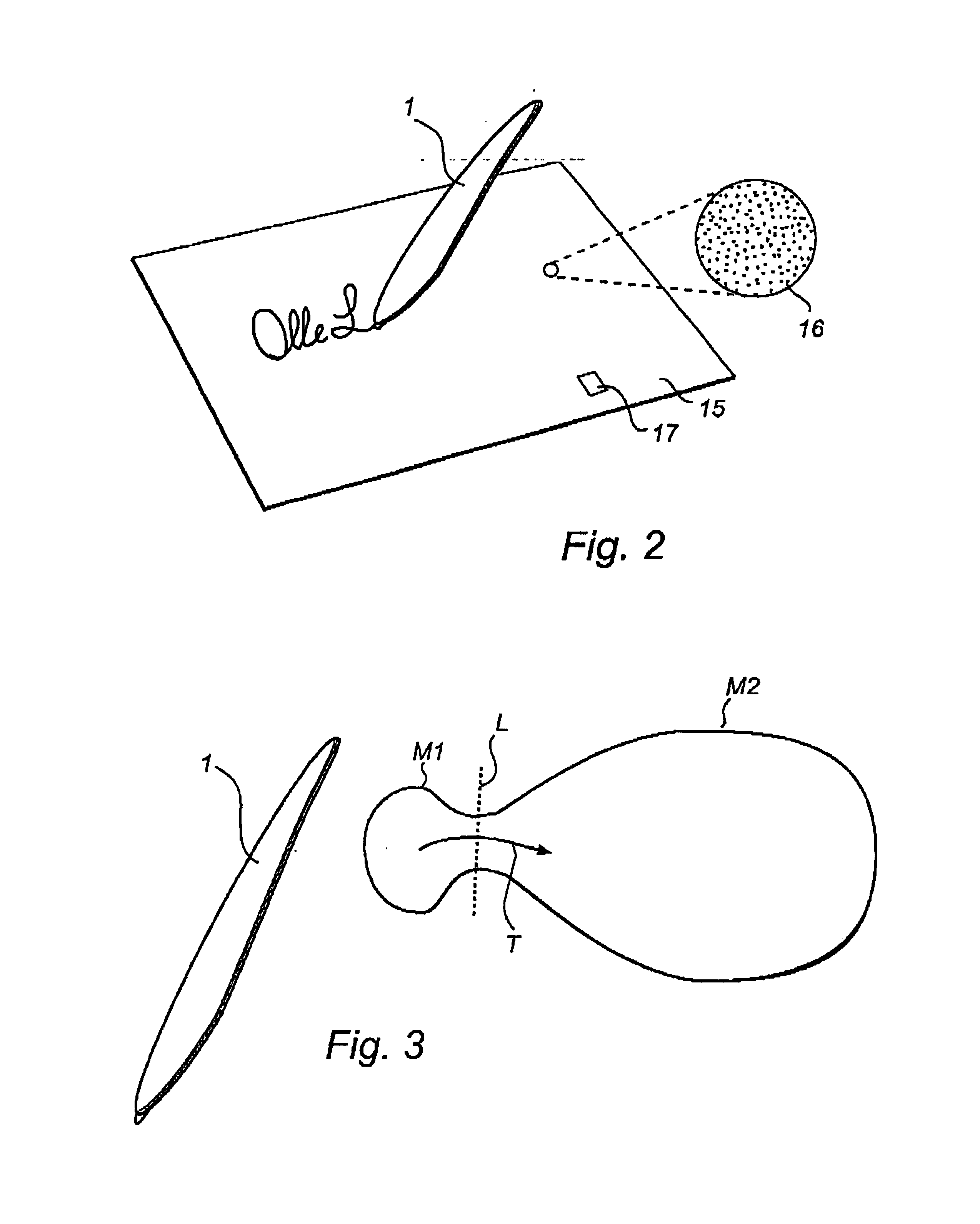Recording and communication of handwritten information
a technology for handwritten information and recording, which is applied in the direction of mechanical pattern conversion, static indicating devices, instruments, etc., can solve the problems of reducing the possibility of deleting information that has been recorded by the user unit, requiring two steps to enter handwritten text electronically, and reducing the possibility of deleting information, etc., to achieve the effect of facilitating searching, increasing the possibility of deleting, and increasing the processing capacity
- Summary
- Abstract
- Description
- Claims
- Application Information
AI Technical Summary
Benefits of technology
Problems solved by technology
Method used
Image
Examples
Embodiment Construction
[0049]FIG. 1 shows a system for information management according to an embodiment of the invention. A hand-held user unit in the form of a digital pen 1 is designed for electronic recording of handwritten information. In the preferred embodiment, the pen 1 has a two-dimensional sensor 2 for recording images, a main processor unit 3 for processing the images recorded by means of the sensor 2 and for converting these into a sequence of positions that describes the movement of the pen 1 while the information was being written down, an internal memory unit 4 for storing the information recorded by means of the main processor unit 3, a transceiver 5 for communication of the recorded information and an ordinary writing implement 6 for showing, by emission of a pigment, the information written down.
[0050]In the currently preferred embodiment, the sensor 2 is a two-dimensional CMOS sensor that can be caused to record up to 100 images per second, where each image comprises 100×128 pixels wit...
PUM
 Login to View More
Login to View More Abstract
Description
Claims
Application Information
 Login to View More
Login to View More - R&D
- Intellectual Property
- Life Sciences
- Materials
- Tech Scout
- Unparalleled Data Quality
- Higher Quality Content
- 60% Fewer Hallucinations
Browse by: Latest US Patents, China's latest patents, Technical Efficacy Thesaurus, Application Domain, Technology Topic, Popular Technical Reports.
© 2025 PatSnap. All rights reserved.Legal|Privacy policy|Modern Slavery Act Transparency Statement|Sitemap|About US| Contact US: help@patsnap.com



